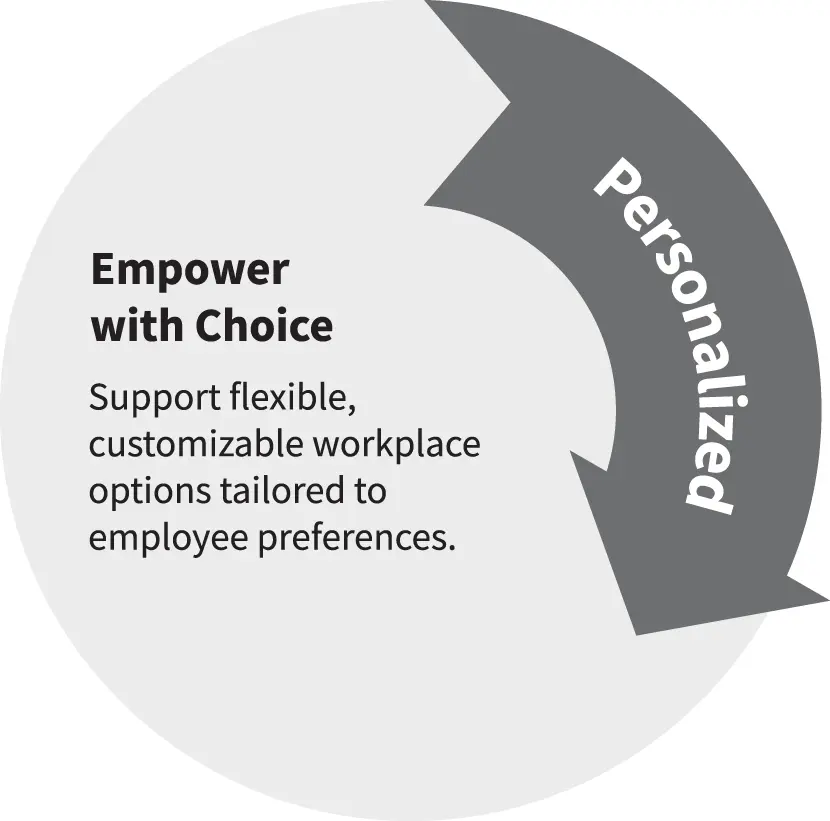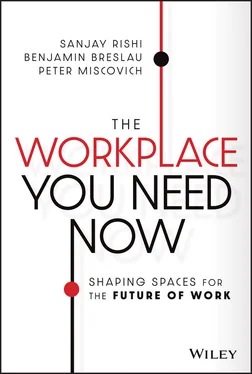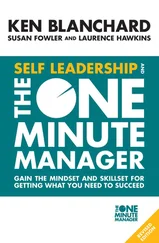In the aftermath of all that despair, however, optimism, innovation, and an acceleration of lasting changes have emerged. CEOs of world-leading organizations have been on the news talking about their workplaces. The evolution of work – a perpetual journey – has become front and center as organizations begin to reconcile priorities of collaboration and culture with the learnings and implications of mass remote working. The idea of “workplace” as we knew it has undergone unprecedented and unplanned transformation.
Traditionally, of course, the office has had a central role in the business of work. “Going to work” meant going to a downtown high-rise office building or a suburban corporate campus, not your guest bedroom or kitchen table or, if you are fortunate, an actual home office. The pandemic shattered these conventional views of work and the office, and upended many other societal norms along the way.
Employee expectations shifted significantly during the pandemic, as many continued to be just as productive from home as in the office – and they didn’t miss the commute. Many organizations are now shifting their expectations, examining their workplaces and real estate portfolios as they ponder the evolving purpose their workplaces should serve.
The value of the workplace is being redefined, with the recognition that brand, talent, culture, and creativity are inherently intertwined. Enterprises large and small, public and private, along with communities, are assessing whether the current shifts we are seeing in how people live and work are cyclical or structural. Consumers are adopting new lifestyles and rethinking their value systems. Health and safety, social justice, and environmental impact are at the top of the agenda for many workers and, likewise, for many employees, customers, shareholders and other stakeholders. And yet, at the same time, there is broad recognition that offices and workplaces are at the heart of organizational culture, creativity, and talent attraction – fundamental keys to individual and organizational success.
The opportunity to write a book about this pivotal moment was too compelling an opportunity to pass up. Across diverse cultures and societies, work and workplace are evolving through multiple dimensions. The best thing I did was to enlist my colleagues Ben Breslau and Peter Miscovich – both prolific thinkers, researchers, and writers in their own right. To no one’s surprise, the response was an immediate and enthusiastic yes . Over many months, through holidays and long weekends, they juggled work, home, and family priorities, yet nonetheless were able to devote precious time to this endeavor.
Our understanding of what constitutes a workplace has been fundamentally redefined as it becomes increasingly clear that work is not a place you go to but something you do – a phrase you will encounter again.
In our daily work lives, we collaborate every day with organizations that are pioneering new approaches to their workplaces, buildings, and real estate portfolios. These owners, occupiers, and operators of corporate real estate represent a rich repository of experiences and knowledge that we have drawn from throughout the book. We were fortunate – and grateful – for the unanimous support we received from our clients so willing to share their workplace innovation stories.
In the pages ahead, we seek to navigate these combined experiences to provide a window into the probable and a glimpse into the possible – personal, responsible, and experiential workplace for the future of work. We hope you find the book thought-provoking and worthy of sparking debate. Most important, we trust you will uncover trends and ideas to inspire the future of work and workplace in your organization and in your personal lives.
Sanjay Rishi
PART I The Personalized Workplace
“My philosophy is that everything starts with a great product.”
Steve Jobs, Co-Founder, Apple Inc .
Consider your favorite products and what you love about them. Is it the style? Maybe they are particularly practical or intuitive. Do they serve their purpose well? Do they provide great value?
They are probably easy to access and increasingly interoperable, or at least compatible, with other products you use. If they are innovative and entertaining, too, you may find it hard to live without them. And, depending on your shopping preferences, you may find they are made by companies committed to environmental sustainability, fair labor practices, and other public benefits.
Your favorite products likely engage you in a personal way by responding to your needs. They probably aren’t custom-built for you, but rather developed in a way that feels personalized or configurable for your needs. Such products don’t dictate when you use them, but instead draw you to them. They often offer the ultimate flexibility in how, when, and why you use them.
Think about your iPhone, your Peloton, your favorite pair of jeans, or even your favorite fancy latteccino made just the way you like it from your local coffee bar. When you feel like changing things up, you can consider additional options like a new mobile app, a different yoga or cardio workout, an of-the-moment accessory, or a passionfruit beverage from your friendly barista.
Now think about your workplace – that is, the one you frequented before the pandemic. Would you characterize it the same way you describe your personal items? Probably not. Yet, believe it or not, it’s actually possible for a workplace to be all of those things – personalized, responsive, beneficial for public good, experiential. In fact, workplaces are going to have to become more like consumer products to meet the needs of workers now. For employers, now is the time to adapt the “product” – the workplace – for a personalized, responsible, and experiential future (see Figure I.1).
We live in a world of seemingly endless options and instant gratification. To stand apart, consumer brands have had to find ways to create emotional connections with their customers, almost instantly. Why should the workplace be any different?
People have more options than ever in where, how, and when they work, including more opportunities to work with companies located around the world, or even to start their own business as a freelancer or gig worker. Organizations must find ways to spur affinity, create community, and engage workers far beyond their daily tasks.

Figure I.1 The Personalized Workplace The personalized workplace is responsive to employee needs and preferences, and will empower talent with a choice of workplaces and spaces.
Like a product, the workplace must be designed, measured, and marketed. It must meet the essential needs of its customers – your workforce – and embody your brand promise and values. It must be continually optimized and proven effective, from both a space and social perspective. And, finally, it must draw in talent and keep them engaged and productive.
This isn’t the workplace of the past, or even of one year ago. A new world of work is emerging. Are you confident you’re creating the workplace you need now?
1 The Origin and Evolution of Workplace
“Those who cannot remember the past are condemned to repeat it.”
George Santayana, Philosopher
Today, most C-suite leaders recognize that great workplaces and workplace strategies can help win the war for talent and provide competitive advantage. That recognition is a relatively recent development, however. With a few notable exceptions, organizations historically have viewed the workplace as a location to get work done and a necessary expense. Today, a more sophisticated view of workplace is emerging.
Читать дальше













